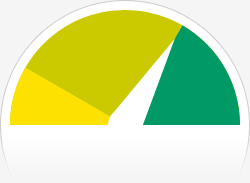Here is the question: When considering Durbin’s requirement prohibiting exclusive debit transaction routing arrangements, does the merchant or issuer choose which second unaffiliated network is available to route transactions? The answer is unclear and its implications impact both the intent of the regulation and the technology required to implement the rule.
Thus far, the majority of interest in Durbin is focused on the impact of interchange fee regulation with little attention on the second aspect of the provision; network exclusivity and transaction routing. Durbin has two provisions, the second of which says “that neither the issuers nor network may restrict the ability of merchants to direct the routing of the transaction”. The rule is intended to foster competition between networks. The concept being that when at least two unaffiliated networks compete for transaction routing, the price merchants pay will optimize.
The Board is requesting comment on two alternative rules prohibiting network exclusivity: one alternative would require at least two unaffiliated networks per debit card, and the other would require at least two unaffiliated networks for each type of transaction authorization method. Under both alternatives, “the issuers and networks would be prohibited from inhibiting a merchant’s ability to direct the routing of an electronic debit transaction over any network that may process such transactions.” Some have suggested that the answer to this question lies in the currently available least-cost routing selections available to consumers between PIN and Signature debit. In this scenario debit cross-routing is the solution to network exclusivity. One expert suggests that “one such solution would be Visa for signature debit and Maestro for PIN debit. They are not affiliated, and thus fulfill the requirements of the first alternative.” The existence of the second alternative makes it clear that the Fed has not yet decided whether signature and PIN debit are one market.”
The contradiction is between the intent of the regulation and the Boards’ rule making process. The differentiation between routing based on a transaction or a card may delineate the type of routing available, but it does little to foster routing competiveness. The intent of the regulation is to foster competition between networks. Allowing the Issuer to choose the second network by pitting the PIN and Signature networks against each other is a weak proposal. On the other hand, if merchants choose the second network from a multitude of routing options competition will emerge, but how does that work? In order for the merchant to have a choice between a variety of networks, Issuers would have to support routing on all networks. In this scenario merchants might choose different networks on a location or regional basis? Implementing this type of network routing matrix will mean substantial changes in the infrastructure and business rules. The time and effort to create such a system is currently unknown. If competition between networks is the congressional goal this seems to be the correct interpretation.
The alternative interpretation is for the Issuer to offer the merchant a choice of two networks. In this case every Issuer would be forced to offer two networks for processing a transaction. As an example, Visa and MC may have to route each other’s transactions. The merchant would be able to choose which of the two available networks to route the transaction. Presumably, creating competition. As a result the merchant would choose the cheaper of the two. However, this scenario does not assure the merchant choice and adds the possibility that the Issuer could offer a second network with higher fees. In this case the second network would be the more costly option resulting in no opportunity for merchant savings.
How a two-network solution is allowed under the final version of the regulations remains unknown. It does seem that merchant choice fits congressional intent more clearly than Issuer choice, even if the technical challenges and costs to develop such a system are currently not contemplated or that the rule making process appears to miss the point.

